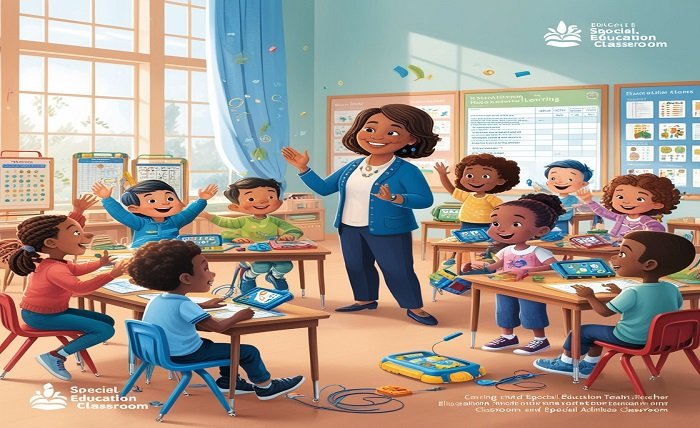Introduction
A vital component of contemporary educational systems, special education makes ensuring that children with disabilities have access to the tools, assistance, and accommodations they need to thrive in the classroom. The idea of the Least Restrictive Environment “lre special education” is one of the most crucial special education concepts. The LRE framework aims to meet each student’s unique learning needs while creating the most inclusive environment feasible for students with disabilities.
What is Least Restrictive Environment (LRE)?
Students with disabilities must receive their education in environments that are as similar to the general education environment as practicable, according to the legal and pedagogical principle known as the lre special education (LRE). The LRE requirement, as stated in the Individuals with Disabilities Education Act (IDEA), guarantees that children with disabilities can engage in the same educational activities as their classmates who are normally developing and that they are not subjected to needless segregation.
LRE’s Legal Foundations
The Individuals with Disabilities Education Act (IDEA), which was later reauthorized as the Education for All Handicapped Children Act (EAHCA) in 1975, introduced the idea of lre special education. Children with disabilities must have access to a free and adequate public education (FAPE) in the least restrictive environment practicable, according to the IDEA.
How Are LREs Used in Classrooms?
Depending on each student’s unique needs, there are numerous ways to implement lre special education. A student with a disability might occasionally be able to engage completely in a general education class with little assistance or modifications. In other situations, the youngster can still require specific interventions or extra resources like a resource room while integrating into the classroom.
Important elements in putting lre special education into practice include:
Collaboration: To develop an individualized education plan (IEP) that details each student’s unique needs and objectives, teachers, special education personnel, and parents collaborate. This strategy aids in determining the proper placement and degree of support.
Modifications and accommodations: These are made to meet the needs of the student and may involve using assistive technology, extra time for exams, or specific teaching methods.
Flexible Learning Environments: To meet different levels of need, schools may offer a variety of settings, from full-time general education classes to more specialized settings.
The Alternative Placement Continuum (CAP)
lre special education does not guarantee that every student with a disability will spend all of their time in general education classes. Rather, a range of educational environments, from the least restricted to the most restrictive, are described by the Continuum of Alternative Placements (CAP). Among the alternatives are:
In a general education classroom: students with disabilities receive the appropriate adjustments and are integrated with their peers without disabilities.
Resource Room: For some subjects, a student may attend a general education class, but for extra help, they may spend a portion of the day in a resource room.
Self-Contained Classroom: Pupils with severe disabilities could get specialized education in a classroom with just other disabled kids.
LRE’s Advantages for Students with Disabilities
There are several advantages for children with disabilities, their classmates, teachers, and the larger school community when lre special education is used in special education. Among the principal advantages are:
Possibilities for Socialization
Through interaction with classmates who are not impaired, inclusion in general education classrooms fosters sociability and communication skills. These exchanges promote a feeling of community and belonging.
Better Academic Results
Because they have more access to demanding curriculum and are exposed to the high standards set by general education teachers, studies indicate that kids with disabilities who receive their education in less restrictive environments typically perform better academically.
Implementing LRE Presents Difficulties
Although lre special education has many advantages, there are drawbacks to its application. The school system, the resources at hand, and the particular requirements of kids with disabilities can all affect these difficulties. Among the difficulties are:
Scarce Resources
Not every school has the tools or trained personnel necessary to completely execute lre special education for every kid. It may be difficult for smaller or less well-funded schools to offer the extra staff support, assistive technology, or adjustments required for successful inclusion.
Training of Teachers
It’s possible that general education teachers lack the necessary training to assist pupils with impairments. To give teachers the tools they need to teach in inclusive classrooms, effective professional development and training are essential.
Conclusion
For students with impairments, the lre special education (LRE) concept is essential to their educational rights. LRE promotes an atmosphere of inclusion, equity, and opportunity by guaranteeing that these kids are taught alongside their peers and have access to the general education curriculum. Although there are still difficulties in successfully adopting LRE, the advantages of inclusion are obvious. LRE has the potential to further pave the path for a more supportive and inclusive educational system with careful planning, resource allocation, and ongoing cooperation between educators, parents, and legislators.
FAQ
Which environment is the least restricted (LRE)?
lre special education tenet that, with the required accommodations and support services, children with disabilities should receive their education in environments that are as similar to those of general education as feasible.
What distinguishes complete inclusion from LRE?
Based on each student’s unique needs, LRE focuses on the best possible lre special education. In contrast, full inclusion entails incorporating all students with disabilities, regardless of their requirements, into general education classes throughout the day.
What are the advantages of LRE for students with disabilities?
LRE gives children with disabilities the chance to engage with their classmates, access a more extensive curriculum, and acquire the intellectual, behavioral, and social skills necessary for life after school. Learn more about: lre special education

